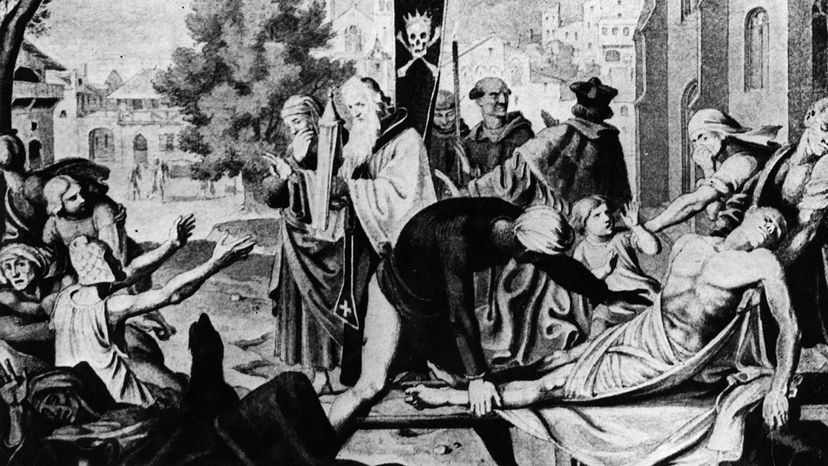
In his introduction to "The Decameron" (circa 1351), Italian author Giovanni Boccaccio captures the uncertainty and fear that accompanied the Black Death's sweep through Europe from 1347 to 1351. It could have been caused by the influence of celestial bodies or by God's wrath, Boccaccio wrote. Physicians had no idea what to do with the tumors and black spots that ravaged victims' bodies. And worse, the people turned on each other. Parents abandoned children; husbands turned their backs on their wives. The streets were filled with the dead, and neighbors sometimes learned of a death next door by the smell. The living didn't have time to mourn; Boccaccio says that due to the large number of dead and the fear of their presence, "a dead man was then of no more account than a dead goat would be today."
The symptoms of the Black Death were gruesome: Tumors covered the body -- some of them as big as an egg or apple, Boccaccio wrote. A large neck tumor might permanently cock a person's head in the opposite direction. Purplish splotches also covered the body. These were nicknamed "God's tokens," because God usually took the sufferer soon after they appeared. The sick even smelled like they were going to die. Bad breath and odors indicated they were rotting from the inside.
Advertisement
Medieval writers tell us that the fevers resulted in delirium -- madmen wandered the streets, shouting wildly. The sick vomited incessantly or coughed up blood. Pus and blood oozed from sores. Once the symptoms started to appear, the victim was a ticking time bomb and died within days. No one knew what to do. There wasn't enough space in the graveyards, so the bloated bodies were left in the street. Dogs ate corpses while babies cried hungrily beside their dead mothers.
When all was said and done, about 25 million people died in the epidemic, approximately one-third of Europe's population at the time [source: Kelly]. How did this happen? What caused this horrific spread of death?